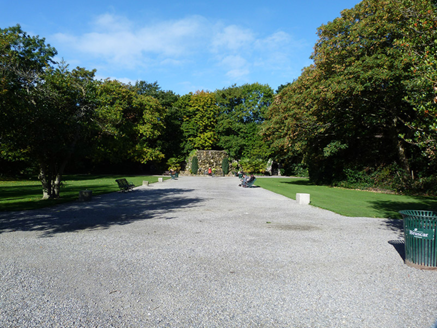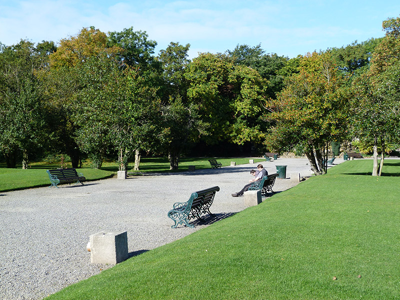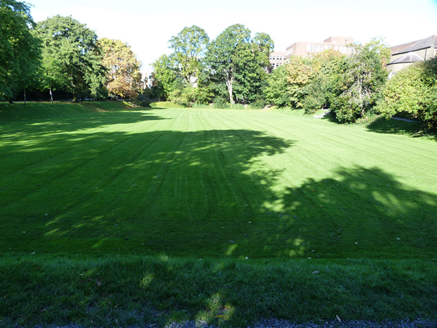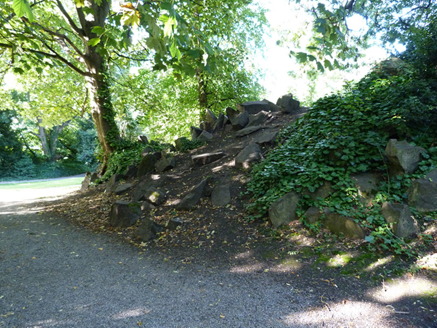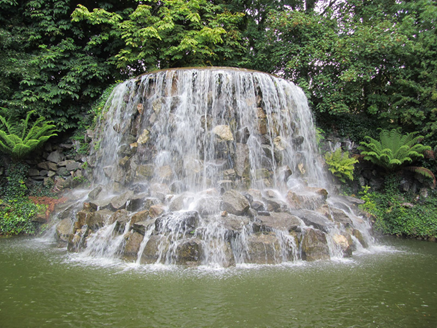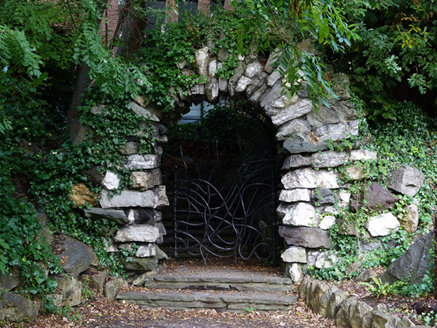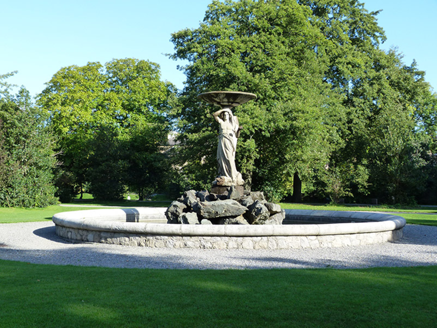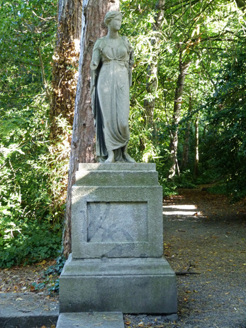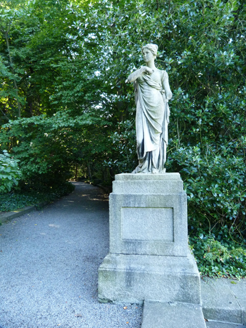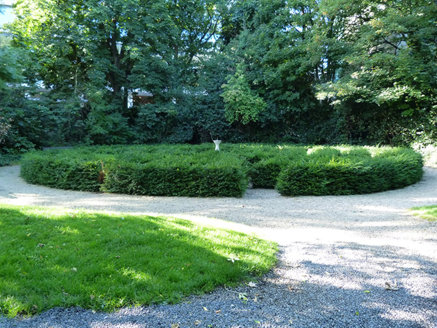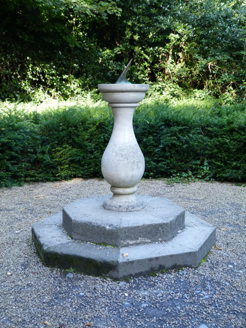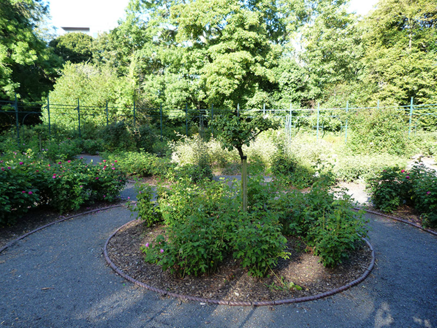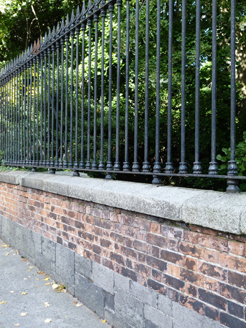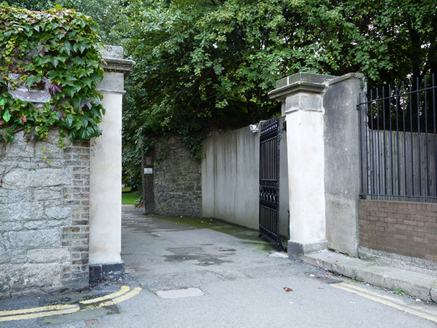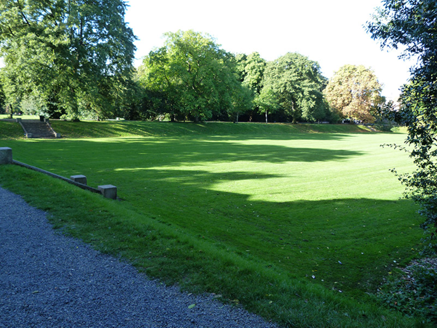Survey Data
Reg No
50920262
Rating
Regional
Categories of Special Interest
Architectural, Artistic, Historical, Social
Previous Name
Earl of Clonmel's Lawn
Original Use
Garden
In Use As
Park
Date
1860 - 1870
Coordinates
315889, 233049
Date Recorded
24/09/2015
Date Updated
--/--/--
Description
Formalized public park, laid out c. 1865, on site of earlier garden. Lawned throughout with geometric gravel avenues, interspersed with mature planting and boulder-strewn mounds. Central avenue on east-west axis flanked by formal parterres with fountains, and terminated at west end by rockwork fountain (restored 1996), with round-headed rockwork arches to north and south. Sunken former archery ground to north end, with site of former boating lake and boating tower to northeast corner (site of these now located within boundary of Iveagh House (50920264 & 3). Circular rose garden to south end and yew maze to southwest corner, with sundial. Some statues of classical gods and naiads remain. Elliptical path to east end follows outline of former terrace. Site bounded by red brick walls laid in Flemish bond over snecked limestone plinth, topped with granite coping and cast-iron railings. Mild steel pedestrian gate to south end on Hatch Street. Snecked quarry-faced limestone wall with dressed granite coping, to eastern boundary, western boundary on Stable Lane lined with wall of random limestone rubble. Mid-nineteenth-century cast-iron vehicular entrance gates to western boundary on Clonmel Street with square-profile rendered piers, rising to carved granite capstones with moulded cornices, abutted by rubble stone walls.
Appraisal
One of the city's 'secret' gardens, a rare survivor of mid-nineteenth-century ornamental garden design, that marries the French Formal and English Landscape styles. Iveagh Gardens was laid out in 1865 to the plans of landscape architect Ninian Niven to form the backdrop to the Dublin Exhibition Palace on Earlsfort Terrace. Shown on Rocque’s map of 1756 as 'Leeson’s Fields', by the late eighteenth century Lord Milltown had leased the land to John Hatch, who sold the land as the garden of a large new-build house on Harcourt Street (Clonmell House, 50920214), which was reputed to be linked to the gardens by a subterranean tunnel. Following the sale of Clonmell House in 1810 the garden was remodelled and renamed 'Coburg Gardens' and opened to the public in 1817. The site was later bought by Benjamin Lee Guinness, who subsequently sold it to the Dublin Exhibition and Winter Garden Co. in 1863; most of the buildings of which do not survive except for parts of Arthur Gresham Jones' exhibition building, incorporated and concealed by the frontage of the National Concert Hall (built for University College in 1914). The buildings were bought by the government to house the Royal University in 1882, while the gardens were bought and enclosed by Edward Cecil Guinness. Although they were truncated to the east by the insertion of a boundary wall during this period, the gardens are otherwise preserved to Niven's original design. The gardens were gifted to the State by Rupert Guinness in 1939, who specified that they should remain unbuilt on, so that they may function as a 'lung for Dublin'. Restored in the 1990s, the sculpture court has been much altered, but the garden retains the historic geometric layout and landscape features, which are enriched by the various fountains and statuary. The formalized layout is softened along the outer edges by areas of mature planting and rock strewn mounds. The large sunken lawn is the only purpose-built archery field in Ireland and in 1922 the carcass of an elephant was buried here.
